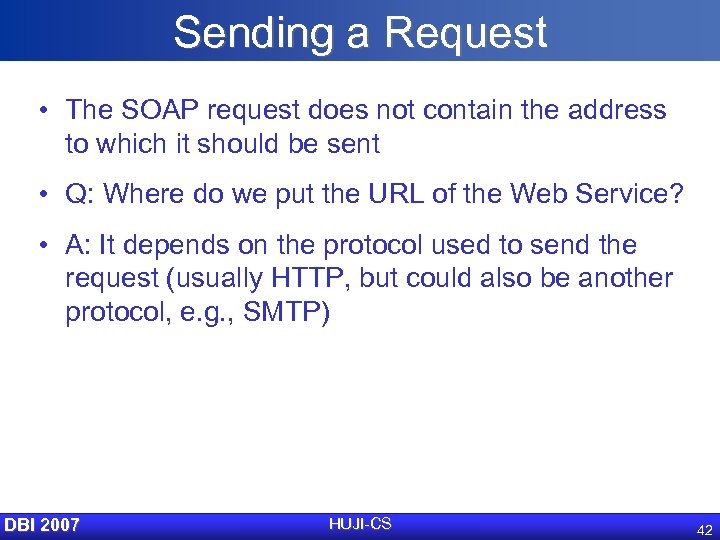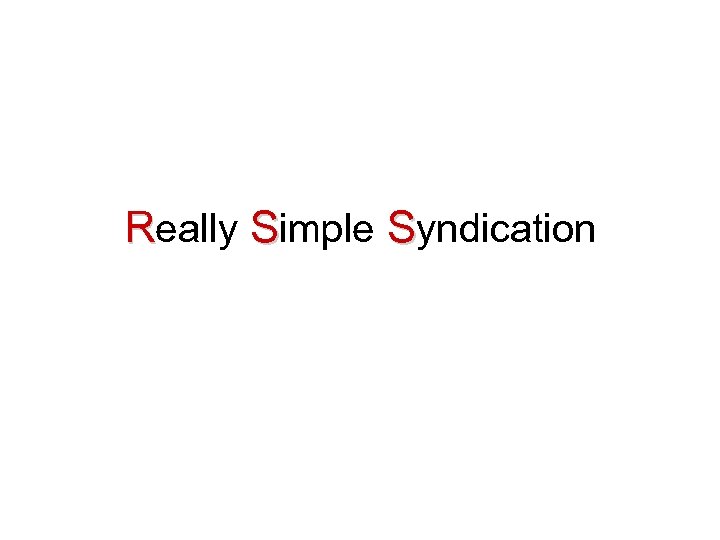In JSX - the syntax extension used for React - you can use plain JavaScript which includes if else statements, ternary operators, switch case statements, and much more. In a conditional render, a React component decides based on one or several conditions which DOM elements it will return. For instance, based on some logic it can either return a list of items or a text that says "Sorry, the list is empty". When a component has a conditional rendering, the appearance of the rendered component differs based on the condition.
The article aims to be an exhaustive list of options for conditional renderings in React and best practices for these patterns. We can check the conditions and accordingly define the code to be executed inside some other checked condition using nested if statements in javascript. Nesting of conditional statements can be done up to any number of levels as required as per the use case while coding. Firstly, we will discuss the syntax and flow of execution followed while using the nested if statements which can also be accompanied by else statements.
Further, We will learn how we can implement nested if with the help of some examples. In general, some of the features of ES6 can be used almost for "free," such as modules, arrow functions, rest parameters and classes. These features can be transpiled to ES5 without much overhead. You can load a polyfill first, and your code will run as if the browser has that functionality. Besides nested if statements there are many other conditional statements in javascript like an if-else ladder, switch statement and so on. In every programming language, we use multiple conditional statements that are supported by that language.
In the case of javascript, there is one conditional statement that allows you to check and verify the conditions and define your working depending on some other conditions. This is possible by using the nested if statement supported by javascript. In this article, we will learn how we can use nested if conditional statement to check the conditions within other conditions. This means, you can create test conditions in the form of expressions that evaluates to either true or false and based on these results you can perform certain actions.
The differences between the two languages are more prominent than their similarities. Java has static typing, while JavaScript's typing is dynamic. Java is loaded from compiled bytecode, while JavaScript is loaded as human-readable source code. Java's objects are class-based, while JavaScript's are prototype-based. Finally, Java did not support functional programming until Java 8, while JavaScript has done so from the beginning, being influenced by Scheme.
Specifying the start and end of a range literal is now optional, eg. Fixed important bugs with nested significant and non-significant indentation (Issue #637). Added a --require flag that allows you to hook into the coffee command. Added a custom jsl.conf file for our preferred JavaScriptLint setup. Sped up Jison grammar compilation time by flattening rules for operations. Block comments can now be used with JavaScript-minifier-friendly syntax.
Added JavaScript's compound assignment bitwise operators. Bugfixes to implicit object literals with leading number and string keys, as the subject of implicit calls, and as part of compound assignment. JavaScript is a high-level, often just-in-time compiled language that conforms to the ECMAScript standard. It has dynamic typing, prototype-based object-orientation, and first-class functions. It is multi-paradigm, supporting event-driven, functional, and imperative programming styles.
It has application programming interfaces for working with text, dates, regular expressions, standard data structures, and the Document Object Model . The parentheses () around both implicit return statements in the ternary operator enable you to return a single or multiple HTML elements or React components from there. If it's just a single element though, you can omit the parentheses. Besides Renaming files and folders, which is available in the context of any language, you can also rename classes, methods, functions, variables, and parameters. WebStorm changes the name of the symbol in its declaration and by default all its usages in the current project.
The outer function returns the inner function and the element's onclick is set to that inner function. This ensures that each onclick receives and uses the proper i value . The REPL now properly formats stacktraces, and stays alive through asynchronous exceptions.
Using --watch now prints timestamps as files are compiled. Fixed some accidentally-leaking variables within plucked closure-loops. Constructors now maintain their declaration location within a class body.
Chained class instantiation now works properly with splats. CoffeeScript now enforces all of JavaScript's Strict Mode early syntax errors at compile time. Decision Making in programming is similar to decision-making in real life.
In programming also, we face some situations where we want a certain block of code to be executed when some condition is fulfilled. A programming language uses control statements to control the flow of execution of the program based on certain conditions. These are used to cause the flow of execution to advance and branch based on changes to the state of a program. JavaScript contains a standard library of objects, such as Array, Date, and Math, and a core set of language elements such as operators, control structures, and statements. Core JavaScript can be extended for a variety of purposes by supplementing it with additional objects.
I said const is "immutablish" because it does not work in the same way as const in C/C++. What const means to the JavaScript runtime is that the reference to that const variable will never change. This does not mean the contents stored at that reference will never change. For primitive types (number, boolean, etc.), const does translate to immutability (because it's a single memory address). But for all objects , const does not guarantee immutability. This short refactoring tutorial will explain how you can write guard clauses for your if statements, rather than using nestedif ..
This can help you to create clean and easy to read code. It will give examples using JavaScript, but the same programming style can apply to other languages. In other words, inside an IIFE, we can use any type of conditional logic. This allows us to use if...else and switch statements inside return statements and JSX if you consider it to improve the readability of the code. CoffeeScript loops no longer try to preserve block scope when functions are being generated within the loop body. Instead, you can use the do keyword to create a convenient closure wrapper.
Added a --nodejs flag for passing through options directly to the node executable. Better behavior around the use of pure statements within expressions. Fixed inclusive slicing through -1, for all browsers, and splicing with arbitrary expressions as endpoints. This AST follows Babel's spec as closely as possible, for compatibility with tools that work with JavaScript source code.
Each time the loop is executed, the prop variable is filled with the name of another property that exists on the object until all properties have been returned. The returned properties are both those that exist on the object instance and those inherited through its prototype chain. With if and else, we can run blocks of code depending on whether a condition is true or false. However, sometimes we might have multiple possible conditions and outputs, and need more than simply two options. One way to do this is with the else if statement, which can evaluate more than two possible outcomes.
The most fundamental of the conditional statements is the if statement. An if statement will evaluate whether a statement is true or false, and only run if the statement returns true. The code block will be ignored in the case of a false result, and the program will skip to the next section. In this example, three nested if-else statements check different conditions (e.g., isSeparated) and update a variable result. Now that I'm comfortable with writing in ES6 and transpiling my code to ES5, more ES6 goodness will follow naturally over time.
It is a multi-way branch statement that is also used for decision-making purposes. In some cases, the switch statement is more convenient than if-else statements. It is mainly used when all branches depend upon the value of a single variable. It executes a block of code depending upon the different cases.
An if….else statement includes two blocks that are if block and else block. It is the next form of the control statement, which allows the execution of JavaScript in a more controlled way. It is used when you require to check two different conditions and execute a different set of codes. The else statement is used for specifying the execution of a block of code if the condition is false. Syntactically, it's not one of JavaScript's best, nor is its design.
We're forced to manually add break; statements within each case, which can lead to difficult debugging and nested errors further down the case should we forget! Douglas Crockford has written and spoken about it numerous times, his recommendations are to treat it with caution. To enable ES6 import statements for React Native, you need to set the allowSyntheticDefaultImports compiler option to true. This tells the compiler to create synthetic default members and you get IntelliSense.
React Native uses Babel behind the scenes to create the proper run-time code with default members. If you also want to do debugging of React Native code, you can install the React Native Extension. Refactoring to replace an expression with a function-scoped variable or a block-scoped variable . This refactoring makes your source code easier to read and maintain.
CoffeeScript now uses appropriately-named temporary variables, and recycles their references after use. Loading CoffeeScript in the browser now adds just a single CoffeeScript object to global scope. Fixes for implicit object and block comment edge cases. Non-callable literals (strings, numbers etc.) don't compile in a call now and multiple postfix conditionals compile properly. Postfix conditionals and loops always bind object literals.
Conditional assignment compiles properly in subexpressions. Super is disallowed outside of methods and works correctly inside for loops. In the end, it was decided that the simplicity was more valued. In CoffeeScript there remains only one type of variable.
CoffeeScript supports interspersed XML elements, without the need for separate plugins or special settings. The XML elements will be compiled as such, outputting JSX that could be parsed like any normal JSX file, for example by Babel with the React JSX transform. CoffeeScript does not output React.createElement calls or any code specific to React or any other framework. It is up to you to attach another step in your build chain to convert this JSX to whatever function calls you wish the XML elements to compile to. You might have noticed how even though we don't add return statements to CoffeeScript functions, they nonetheless return their final value.
The CoffeeScript compiler tries to make sure that all statements in the language can be used as expressions. Watch how the return gets pushed down into each possible branch of execution in the function below. Note how because we are assigning the value of the comprehensions to a variable in the example above, CoffeeScript is collecting the result of each iteration into an array.
Sometimes functions end with loops that are intended to run only for their side-effects. Sometimes the best approach to conditionals is to avoid using if-else and switch altogether. When there are a large number of discrete values for which to test, both if-else and switch are significantly slower than using a lookup table.
JavaScript also supports nested ternary operators for if…else…else if statements. This way you can have as long chains of ternary operators as you like. However, JavaScript allows you to construct nested ternary operators to replace if…else…else if statements.
In this syntax, the condition is a value or an expression that evaluates to true or false. If the condition is true, the if...else statement executes the block that follows the if branch. It is a best practice to use the ternary operator when it makes the code easier to read. If the logic contains many if...else statements, you shouldn't use the ternary operators.
High quality applications have been, can be, and will continue to be, written in plain old JS. There is more than enough features in the language to write strong, well thought out code. Classes, async functions, promises, arrow functions, etc. etc, not to mention what's on the board for the next versions . Throw RxJS into the mix and you're really off and running. Guard clauses can reduce the number of lines in your functions, classes, and so on. A result of using multiple guard clauses is that you can see what conditions trigger certain code to be executed.
The refactored function uses guard clauses instead of nested if-else statements. The variable result is not necessary anymore and has been removed. The refactored code is easier to understand because there is less state and each execution path returns early. The spread operator (...) is a very convenient syntax to expand elements of an array in specific places, such as arguments in function calls. Showing you some examples is probably the best way to demonstrate just how useful they are. Documentation strings, or docstrings, are strings enclosed in double (""") or single (''') quotation marks that appear on the first line of any function, class, method, or module.




























